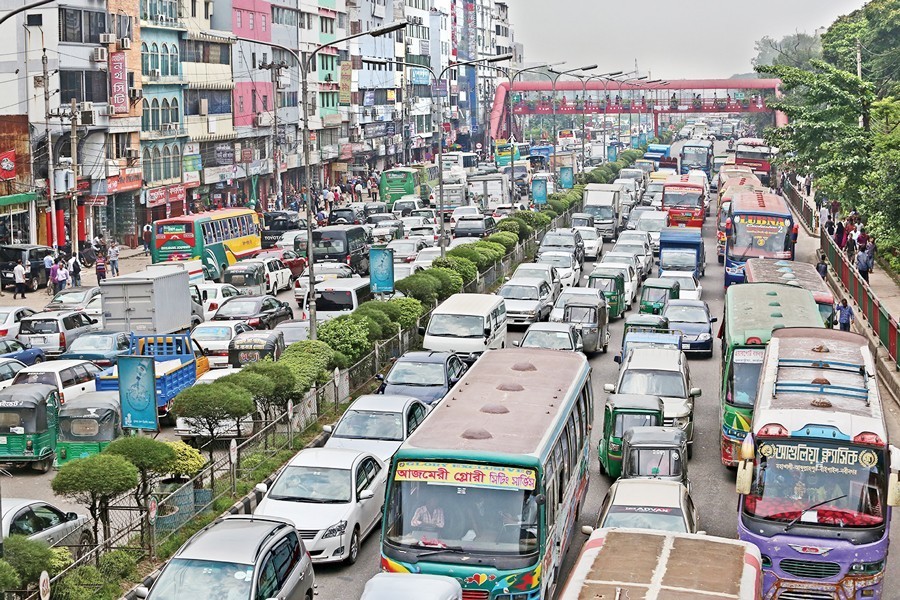Tailbacks, be those in Dhaka city or on the country's major highways, always make news headlines. Descriptions have been galore about the economic costs of the same and sufferings caused to the travelling public. Most people are aware of the enormity of the problem. And commuters themselves are also familiar with their everyday suffering.
It is hardly debatable that the traffic situation had turned worse before the pandemic. It eased to a great extent when restrictions were imposed by authorities on the movement of passenger vehicles both in Dhaka city and inter-district routes. With the lifting of all Covid-related restrictions recently, city streets are back to their usual chaotic state. Commuters, as well as operators of vehicles, claim the traffic situation is now at its worst. It is, however, difficult to use a superlative degree when it comes to describing the traffic situation of the metropolis. One can guess well the scenario during the upcoming month of holy Ramadan.
Weekdays and weekends now do not make any difference. Streets remain clogged with all types of vehicles, mechanical or otherwise, from morning till midnight throughout the week. The resumption of classes in all educational institutions has only made the situation far more difficult. Vehicles remain stranded for hours together in Dhaka streets. The crossing of a small distance very often takes a couple of hours or more and passengers travelling by public buses, rickshaws and auto-rickshaws have no option but to suffer in hot and humid weather.
The government is trying hard to find a long-term solution to the problem. It has been implementing multi-billion dollar megaprojects, including metro rail and elevated expressways. Those are cost-intensive and time-consuming. Yet, when completed, the mega projects are expected to cut the travelling time and ease congestion, to some extent. Experts in the relevant fields are not sure about the actual outcome of the mega transport projects. But, in many old cities around the world, governments have tried to resolve the tailback problem by building mega infrastructures such as expressways and overhead or underground rail routes.
What is most disconcerting is that nothing tangible is being done at the micro level to improve the traffic situation in Dhaka city. The relevant agencies have given up all hope. Their inaction tells it all. These agencies are indifferent to some developments that have turned the Dhaka traffic nightmarish. The proliferation of unlicenced pedal and motorized rickshaws, commercial operation of motorbikes and the unabated growth of private cars and buses are among such developments. Even the intervention of higher courts has not helped.
Under the prevailing circumstances, relevant authorities need to take some drastic actions. Without any further delay, they should try to remove unauthorized transport, mechanical or manual, from the streets. The Bangladesh Road Transport Authority (BRTA) should take a tough stance on buses plying city streets without valid and updated documents. The same approach should apply in the case of bus operators. A joint and persistent move by BRTA, two city corporations and Dhaka Metropolitan Police (DMP) would help reduce traffic in city streets. That would help ease the congestion, to some extent.


